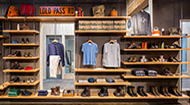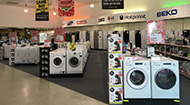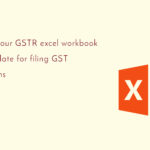Top 6 Effective Retail Practices

Here are six effective retail best practices which when effectively designed and deployed deliver impressive results before, during and after the sale.
Before The Sale
Retail success begins before a sale happens with customer strategy and effective marketing.
- Designing The Customer Experience – Successful retailers have always been customer-centric. But best-in-class retailers are building their customer focus with Customer Experience (CX) management strategies in order to stand out in a socially connected, multi-channel and increasingly competitive retail environment.
- Precision Marketing – Batch and blast offers to produce poor conversions and harms future marketing efforts as consumers unsubscribe or blacklist irrelevant promotions. Instead, retailers must deliver relevant, personalized and contextual promotional offers using consumer insights and marketing automation software. Consumer insights are gathered from historical data such as POS, e-commerce, secondary systems, loyalty programs, contact centres and supply chain or fulfilment systems. When centrally managed in a CRM software system, and integrated with marketing software that tracks online customer behaviours, retailers are afforded the opportunity to design narrow customer segments and create highly relevant offers based on demographics, psychographics, and behaviours, all of which can significantly grow customer acquisitions, retention, and reactivation.Effective customer segmentation may be based on customer demographics, customer behavioural patterns, customer preferences for known brands or into tiers based on Recency-Frequency-Monetary (RFM) values. The bottom line is that the more narrow the segmentation, the higher the conversions and the lower the opt-outs or unsubscribes.
During The Sale
Smart retailers leverage proven techniques to improve their in-store consumer experience and their own sales success.
- Clienteling – One in ten retailers leverage clienteling tools and processes, which results in a lost opportunity for building personal relationships between consumers and associates. In fact, consumer research consistently shows that personal attention makes the difference between browsing and buying.Clienteling delivers agile and personalized customer service often using mobile devices such as tablets or portable POS terminals. This engagement technique empowers sales associates to provide an exceptional in-store customer experience by supporting key processes such as guided selling, updates to customer information, communication of special events or promotions, deep (often animated) product content, inventory availability, cross-sell and up-sell suggestions, mobile check-out, portable payment processing, shipping information and a 360 degree view of the customer relationship (including style and brand preferences, prior purchases, active warranties, loyalty program information, key dates such as anniversaries and birthdays, and more.)
- Customer Feedback – Most retailers fall short on getting the right customer feedback. A customer’s experience is their perception — an emotional response — of their retailer based on the sum of their interactions. However, not all interactions are equal and retailers must understand which connections are the most influential in achieving their business objectives. Feedback tactics are many and include surveys, more formal Voice of the Customer (VOC) programs and consumer research. Regardless of method, retailers must understand which consumer interactions performed in which channels most affect purchases, satisfaction, retention, and loyalty.
After The Sale
Once the sale is made, retailers must advance one-time consumers into repeat customers.
- Consumer Loyalty – Effective loyalty programs are a top sales tool in generating repeat sales and increasing customer share. Unfortunately, most retailers don’t give these programs the strategic planning they deserve. The combination of customer personalization, appreciation, and the recognition result in repeat business. Developing loyalty program goals is pretty straightforward. Where loyalty programs tend to underperform is when they deliver less than relevant and contextual offers. Across the board, discount coupons produce low conversions and erode already thin margins. Instead, delivering highly customized offers by accessing the customer profile and purchase history from the CRM system will increase conversions and result in improved up-sell, cross-sell and margin contributions. Whether introducing new products, holding a special store event or simply recognizing your best customers for their patronage, using relevant and personalized data will enable you to engage customers, get consumers back into the store, sell higher margin merchandise and enhance the customer experience.
- Consumer Intelligence – Identifying consumer buying criterion, purchase patterns and affinity measures are prerequisites to effective marketing, merchandising, pricing and revenue growth. Augmenting consumer data housed in a CRM system with personal preferences, lifestyle information and social profiles can empower targeted communications and impressive precision marketing campaigns. And understanding seasonal trends, cross-category preferences, halo effects and up-sell opportunities are but a few data points that can trigger simple actions which lead to significant revenue growth.














 Previous Post
Previous Post Next Post
Next Post